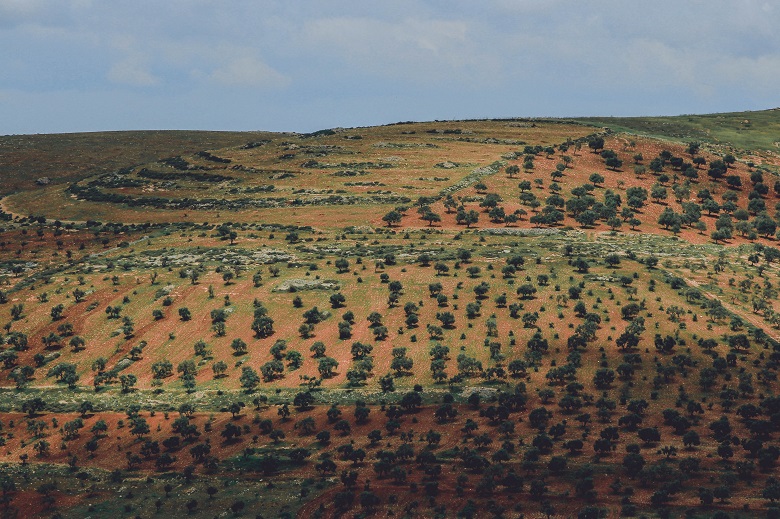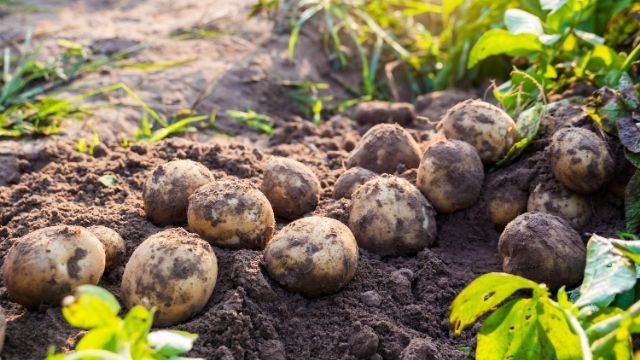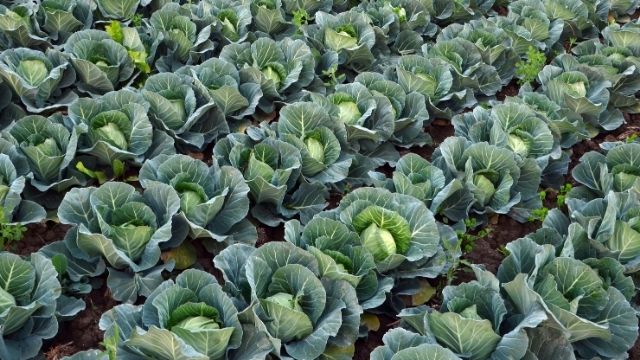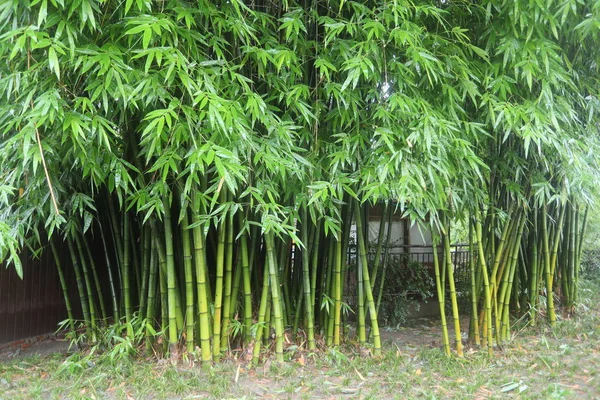In many dryland and semi-arid communities across Kenya, tree planting has become a cornerstone of efforts to restore degraded landscapes, improve livelihoods, and mitigate climate change. Yet, despite considerable investments of time, money, and community energy, survival rates for planted trees remain frustratingly low in several areas.
Based on direct community feedback from recent field surveys, four core factors consistently explain these disappointing outcomes. These insights not only point to what is going wrong but also provide a foundation for designing smarter, more sustainable tree-growing initiatives.
1. Inadequate Water
Water scarcity is the most frequently cited constraint to tree survival. Across many communities tree growers cite “lack of water,” “water shortage,” or “insufficient rain” as the key factors undermining tree establishment. In the harsh climates of ASAL counties such as Kajiado, Marsabit, and Turkana, high temperatures accelerate evaporation, leading to extreme water stress for young seedlings.
Read Next: 15 Best Fruits That Grow in Dry Areas of Kenya – Ultimate Guide
“Planted last year when it has not rained so it didn’t survive due to shortage of water.”
In some areas, it’s not just the quantity of water that is a problem, but also the quality. Salinity issues also cause young trees to dry. For instance some tree growers report;
“We use salty water and some trees haven’t adopted to that and they end up being affected.”
The challenge is compounded by timing mismatches—trees are often planted in anticipation of rainfall that either arrives late or not at all, compromising early root establishment. Furthermore, prolonged dry spells and the unpredictable onset of rains due to climate variability further reduce survival odds.
Recommendations
- Schedule planting to coincide with the onset of the rainy season, not after.
- Use mulching techniques to reduce evaporation and retain soil moisture.
- Incorporate rainwater harvesting systems and promote greywater reuse for irrigation.
- In saline-prone areas, promote salt-tolerant species and invest in soil and water testing before planting.
2. Biological Threats
Biological threats are a major barrier to tree survival, particularly from termites and free-roaming animals; both wild and domestic. Termites—referred to by many participants as “white ants”—are common across kenya:
“Destruction by termites… Termites infestation… Termites ate the roots and stems and the trees dried.”
Livestock also play a destructive role. Goats, donkeys, and cows—often essential to local livelihoods—frequently trample or consume young seedlings, especially when trees are planted in unfenced or communal areas:
“Goat destroyed 3 trees… Animals destroy trees… Donkey destroyed all the trees planted.”
In some regions, even wild animals such as locusts or unclassified insect pests damage young trees.
Underlying many of these cases is a lack of adequate protective infrastructure. As some people emphasized:
“Animals like goats enter the farm and they end up destroying the trees, this is due to not fencing the farm.”
Recommendations
- Use affordable fencing options, including thorn branches or recycled materials, especially during early growth stages.
- Where possible, create community grazing schedules or by-laws to protect planted areas.
- Implement biological pest control methods or targeted use of eco-safe termiticides.
3. Environmental and Soil Conditions
In many tree planting areas, broader environmental constraints proved just as limiting as water shortages. Tree growers cite frequent references to “high temperature,” “drought,” and “extreme heat,” conditions that exceed the physiological tolerance of many tree species.
Climate change is also explicitly mentioned by many people who observe changing weather patterns, longer dry spells, and erratic rainfall as leading to many trees loss.
“Climate change pattern Harsh and erratic climatic condition.”
Soil-related challenges are also common, especially in areas with rocky, compacted, or infertile soils:
“Unfertile soil… Rocky lands… The kind of soil we have is not favourable for trees.”
In some instances, unsuitable terrain further undermine planting success:
“Land terrain — there are a lot of stones underground limiting tree growth”
These conditions not only reduce the ability of young trees to anchor and absorb water but also impede microbial activity critical for early-stage root development.
Recommendations
- Conduct pre-planting soil assessments to identify suitability and prepare the site accordingly.
- Amend soils with organic compost or manure, while ensuring it is fully decomposed.
- Consider planting on micro-catchments or zai pits to increase water infiltration and retention.
- Promote native or locally adapted species that are evolutionarily equipped to survive in such soils and climatic conditions.
4. Management Factors
Even where the natural environment is very favorable, poor tree management practices are often responsible for failure. Some trees are not properly planted and farmers can report cases of:
- “Unbalanced mixture of soil and manure during planting seedlings,”
- “Too much manure (immature manure)” which “made tree leaves turn yellow in colour,”
- Or seedlings that were simply “not well planted.”
Inadequate post-planting care is another issue. Many peoplw acknowledge that successful tree growing require “regular monitoring and watering,” which is often lacking due to time constraints or absenteeism:
“Poor management since I am away from home most of the time”. some people say.
The absence of dedicated caretakers, especially in household-level planting, contributes to neglect during the critical first weeks. A few fruit farmers note that there are improvements in areas where local youth or organized groups are actively involved in aftercare.
Recommendations
- Provide hands-on training on proper planting techniques, including soil preparation, spacing, and aftercare.
- Ensure ongoing technical support and follow-ups during the first 3–6 months after planting.
- Involve local youth or community-based organizations in monitoring and maintenance.
- Introduce incentives or recognition systems for households or groups maintaining high survival rates.
How to use the Furaha Baraka App for Better Tree Survival
With resources scarce in dryland communities, a tech solution like the Furaha Baraka Farms Tree Monitoring App can make a crucial difference. This GIS/AI-powered app tracks each planted tree’s status and sends alerts for care. It reminds farmers to water seedlings during droughts – vital because water stress is now a leading cause of tree death. As the Furaha Baraka team explains, the app “reminds us to provide essential resources like water and protection” for every tree
Cities have applied similar ideas: in Berlin, a public app helped citizens log the watering needs of over half a million urban trees, matching watering data to each tree’s age and species. In our drylands context, Furaha Baraka’s app could use local weather forecasts and soil sensors to create watering reminders or even control drip irrigation schedules. For example, Rain Bird’s drip-watering kits can save up to 80% of water by delivering it slowly to the roots/ By linking the app to irrigation tools (like drip lines or water bags), communities can ensure young trees get deep, efficient watering exactly when they need it.
Best Fertilisers for trees planting
Proper planting and care are also critical. The app can guide users through best practices: dig a wide hole (30–40 cm) and refill it with fertile topsoil first, then pack firmly and water in. Mulching around the base helps retain moisture and suppress weeds. Fertilizing is included in the app’s digital log – for instance, it might recommend adding a small amount of compost or balanced N–P–K fertilizer (such as a 5‑10‑5 mix) to boost growth. This approach follows agroforestry manuals: a little manure or slow-release fertilizer at planting gives fruit trees a much better start. The app could even link to trusted fertilizer products or soil-test kits, helping farmers invest in the right amendments.
Why Tree Guards are Important
Livestock and pests pose another threat. The app can record where animals browse and prompt users to install protection. Tree guards – durable tubes or cages placed around trunks – are a proven solution. They act as physical shields against goats, rodents and even harsh sun. Commercial guards (e.g. corrugated plastic tubes) surround the seedling and prevent nibbling or rubbing. Higher-end guards (like vinyl wraps or metal cages) can last for years – A.M. Leonard notes that UV‑stabilized plastic guards last about 5 years and heavy-duty vinyl guards have lifetimes and warranties. The app can send reminders to set up guards when needed, and even link to suppliers of these products.
Use of AI in Tree Growth Tracking
Finally, the Furaha Baraka app creates uses AI and IOT for data collection, analysis and digital records for accountability. By logging each tree’s location, species, planting date and care history, communities can quickly spot trouble spots and learn what works. Similar platforms show that such data matters: Life Terra’s monitoring tool lets groups see every planted tree’s GPS location and estimate its carbon capture over time. In our case, the app could include weather alerts (warning of frost or heatwaves), pest outbreak news, and field reports – all in simple dashboards. It could also promote products and training: for example, it might highlight nearby sellers of organic fertilizers, offer e-learning modules on agroforestry techniques, or even sell rainwater-harvesting and irrigation kits. In short, the app ties knowledge, accountability and the right tools together to keep trees alive where simple planting alone has failed.
FAQ About Tree Planting in Kenya
What is causing the trees to die?
The most common cause is water stress – prolonged drought or insufficient watering shuts down a tree’s physiology. Other factors include poor soil (nutrient deficiency), disease, and damage by animals or people. In drylands, gaps in irrigation, bad planting sites, and unchecked grazing often combine to kill saplings.
How do you regenerate a dying tree?
First, identify the problem (disease, pests, drought, etc.) and treat it. Prune away dead branches to improve airflow, then water deeply but sparingly (don’t flood it). In most cases, a combination of deep watering, mulching, and gentle fertilizing is the best way to nurse a struggling tree back to health.
What is the best fertilizer for a dying tree?
It depends on the soil. First, test the soil pH and nutrients. Often a balanced slow-release fertilizer (for example, an N-P-K ratio of 5-10-5 or 10-10-10) is recommended for trees. Organic options like well-rotted compost, manure or worm castings are excellent for revitalizing trees. In practice, a light application of a standard tree or shrub fertilizer (applied according to label directions) can provide nitrogen, phosphorus and potassium without burning roots. Avoid high-nitrogen “plant food” meant for lawns, as it can stress a failing tree further. If insects or disease are an issue, sometimes a special tree tonic (sold by extension services) that includes micronutrients or mycorrhizae is used.
What does a tree guard do?
A tree guard is a sleeve or tube placed around the trunk of a young tree. Its purpose is to protect the tree during its vulnerable first years. Guards physically shield the bark from animals (deer, goats, rodents, etc.), from lawn mowers or trimmers, and even from harsh sun or wind. For example, commercial plastic or vinyl tree tubes create a mini-greenhouse effect that speeds early growth while keeping deer and rabbits at bay.
What is the best watering system for young trees?
A slow, deep-watering system is ideal. Drip irrigation or soaker hoses are often recommended because they deliver water right at the roots with minimal waste. These methods allow water to sink deeply into the soil, encouraging roots to grow downward. Avoid overhead sprinklers for trees except in emergencies, because they wet foliage and waste a lot of water by evaporation. In orchards and reforestation projects, many use automatic drip lines with timers or moisture sensors so each tree is watered just enough.
Conclusion
Tree planting is only the first step in a much longer journey toward ecosystem restoration and climate resilience. As the real-world experiences illustrate above tree survival is not merely about digging holes and inserting seedlings. It’s about getting the right tree into the right place at the right time—and ensuring it is cared for until it can thrive independently.
Read Next: Which are The Best Softwood and Hardwood Trees in Kenya?
By addressing the root causes of failure—water stress, biological damage, poor soils, and management gaps—we can turn short-lived planting efforts into long-term environmental gains. The next planting season offers a renewed opportunity not just to plant more trees, but to grow trees that survive, adapt, and contribute to lasting change.



